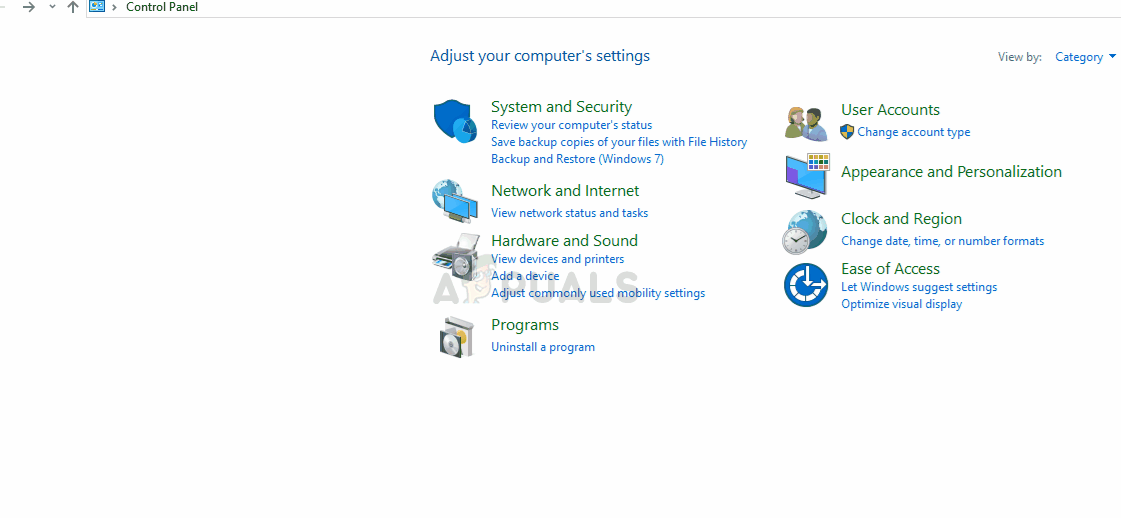How to Fix Windows 10 Not Restarting
Some windows 10 users are experiencing problems with the restart lately. In this particular situation, you will be able to shut down and do everything except restart. Every time a user tries to reboot the system the system lights will stay on while the monitor or screen will turn off. This won’t be a huge issue for the majority of users though. People who occasionally want to reboot to install the updates will find it really inconvenient. But, other than that, there won’t be an issue. You can easily get around this problem by simply shutting down the system or holding the power button down.
What causes Windows 10 to Not Restart?
There are a couple of things that can cause this issue. These things as are follows
- CMOS issue. CMOS is a small cell type memory in the motherboard. It is used to store the BIOS settings. Clearing the CMOS will resolve the issue if it is caused by the CMOS.
- It can be caused by your selected Power Plan especially if you have High Performance plan selected.
- It can be caused by the Fast Startup
- It can be caused by a faulty motherboard
Method 1: Clear CMOS
The first thing that you need to do is clear the CMOS. This should fix the issue for you. Simply follow the steps given below.
Note: If you don’t feel confident then either use the computer manual or contact a computer expert.
- Turn off your pc and make sure it is completely off.
- Open your computer casing
- Looking for a round silverfish cell shaped thing. Remember the round cells that you put in the wrist watches? It will be like that but larger in size
- Now, there are two options. You can either take out CMOS battery or use the jumper. Let’s first have a look at how to remove it
- Remove CMOS Battery: To remove the CMOS battery, just simply take it out. You won’t need any screws to take out the battery. It should be fitted or latched inside its slot. Note: Some motherboards don’t have a removable CMOS batteries. So, if you can’t take it out then don’t use a lot of force. It should easily be removable. If you can’t take it out then that probably means that it is fixed.
- Reset via Jumper: Majority of the motherboards will have a jumper that can be used to clear the CMOS battery. Identifying the location of the jumper is pretty hard since it varies from manufacturer to manufacture. But, there should be CLEAR, CLR CMOS, CLR PWD, or CLEAR CMOS written near it. This should give you an idea of the jumper. You can also use the manual of your computer to pin point the exact location of the jumper.
- Once you have located the jumper, it’s pretty straightforward.
- Simply turn the jumper to the reset position
- Turn on your computer
- Turn off your computer
- Move the jumper back to its original position
Once you are done with these steps, simply close the closing of your system and turn on the computer. Everything should be fine.
Method 2: Change Power Options
Turning off the Sleep, Hibernate, and Fast Startup has resolved the issue for plenty of users. So, follow the steps given below to turn off these options.
- Hold Windows key and press R
- Type control panel and press Enter
- Select System & Security
- Click Choose what the power buttons do from the left pane
- Select Change settings that are currently unavailable
- Un-check the options Sleep, Hibernate, and Turn on Fast Startup. All these 3 options should be under Shutdown settings
- Click Save changes
- Shutdown your Windows and power it back up

Once you are in Windows again, try to reboot. Your system should boot properly.
Note: You can re-enable the Fast Startup if you want but only after 3-5 successful restarts. So, reboot your system for at least 5 times (just to be safe). Once done, follow the steps given above and Check the Turn on Fast Startup option in step 6 and you should be goof to go.
Method 3: Update BIOS
Make sure you have an updated BIOS. Sometimes the issue might be with the software instead of hardware. Keep in mind that updating the BIOS needs some technical knowledge and it can cause a lot of problems if done incorrectly. If you haven’t done anything like this before then we suggest you get help from an expert.
Kindly click here and follow the instructions given in this article to update the BIOS. This is our article with detailed steps for updating the BIOS.
Method 4: Change Motherboard
This might seem a bit aggressive but if the above given options didn’t work then it might simply be a problem with your motherboard. If you can, try to connect your hardware to another motherboard and see if that system works properly or not. Changing the motherboard or other hardware is a complicated process that requires at least a little bit technical know-how. The steps for changing the hardware or your motherboard are out of the scope of this article. We recommend you to take the system to a PC expert if you aren’t confident or well-versed in computer hardware.
Note: If you are using a z87 chipset and the haswell 4th gen refresh CPU then that might be the issue because these are known to have compatibility issues.




